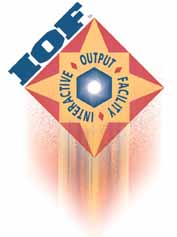
Newsletter
IOFTech Maintenance Release8G Newsletters Doc FAQ Contact Home

|
Newsletter
IOFTech Maintenance Release8G Newsletters Doc FAQ Contact Home |
IOF Release 7D is Year 2000 compliant. Click on Year 2000 Support for a complete description of the modifications made to IOF 7D to make it compliant.
Several sites are currently using the beta version of 7D as the production IOF in their year 2000 LPAR . The beta version is available to any licensed site, and can be ordered by clicking here.
The special expiration date patch below allows IOF to be tested on any licensed system with the system clock set through December of the year 2000. With this patch applied IOF will run until the second midnight after system IPL.
REP 00 5785,B2D2,05DC,BE31
DO NOT APPLY THIS PATCH TO YOUR PRODUCTION SYSTEM. It is intended for testing only. When applied, IOF will run only until the second midnight after each IPL.
Many sites are beginning to do extended Year 2000 testing. IOF 7D (and the beta test version) supports a CPU-dependent expiration patch that is specifically designed to allow extended testing between the dates of June 1, 1999 and July 31, 2001. Click here to order the Year 2000 extended test expiration patch. Note that this patch will not function on IOF 7C or earlier releases.
With either of the two expiration patches described above, IOF 7D will run with the system clock set after the turn of the century. All date fields have been modified to display a 4-digit year. Leap year and day-of-week calculations are correct through September 17, 2042 when the System 390 clock overflows. Job age calculations are correct across the century change. Jobs that ran in 1999 and before have a correct age (daysold) displayed after the system clock advances past January 1, 2000. Sorting on the age field is also correct across the century change.
It is not uncommon to set the system clock on the year 2000 test LPAR to a time earlier than the previous IPL time. For example, you may IPL with the clock set to July 1, 2000 and test for several days. At the next IPL, you may decide to set the clock to December 30, 1999. If you do not cold start JES2, the jobs remaining on spool from the previous IPL will appear to have run in the future, and have a negative job age. IOF displays negative age as blank. Note that setting the system clock in the "past" may have adverse effects on various system and application software. IOF and JES2 successfully tolerate "future" jobs, but other systems may not.
The SLAMRUN, SLAMMEMO, SLAMARCH and SLAMWTR tasks have been modified in 7D to automatically detect and react to 2- or 4-digit years stored in the System Log. The HCFORMAT parm of the HARDCOPY statement in the CONSOLxx member of SYS1.PARMLIB specifies the number of year digits in the log. If you plan to convert to use 4-digit years in Syslog, you should test the new SLAM procedures.
A new variable, YEARSIZE, is set to the value of 2 or 4 in SLAMRUN, SLAMMEMO and SLAMARCH. This variable can be tested in SLAMINST to allow adaptable local SLAM conditions to be written. If you have written any local SLAM conditions, and plan to use the 4 digit year in Syslog, you should modify your local conditions to test YEARSIZE. See the SLAMINST and SLAMDEF clists for examples of how this is done.
SLAMRUN and SLAMMEMO have been modified to tolerate the date change from December 31, 1999 to January 1, 2000 when either a 2- or 4-digit year format is in use. If you have locally written SLAMINST conditions that are date or time related, you should test them across this interval.
Please report any problems, questions or discrepancies you discover with date conversions and displays to your IOF Technical Contact. Year 2000 related problems receive top priority for resolution.